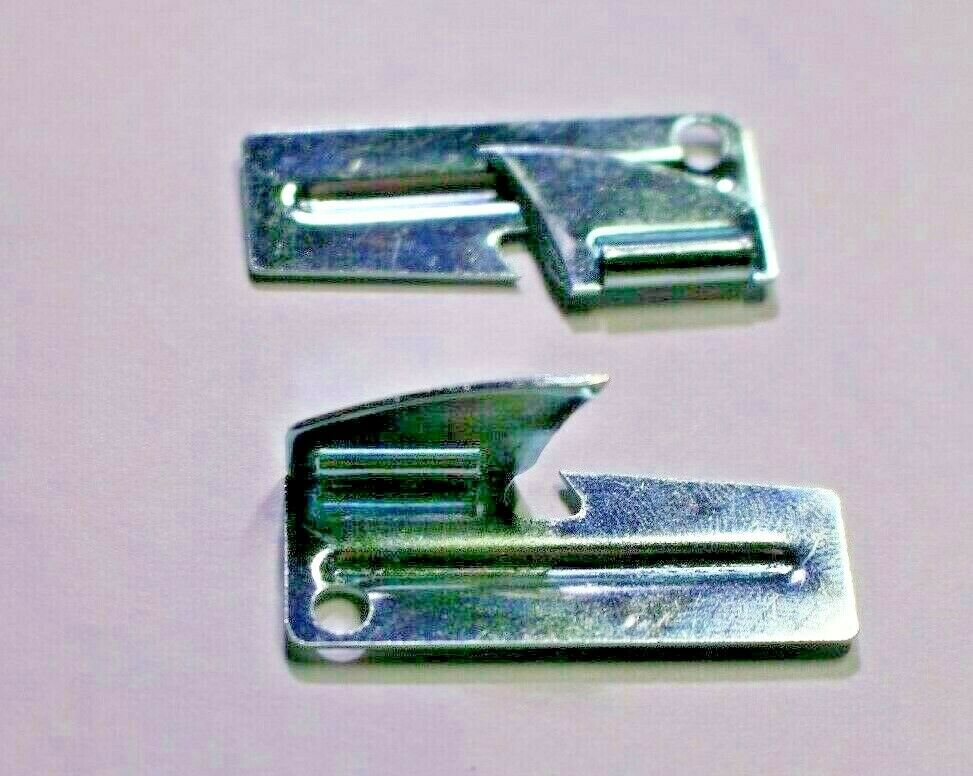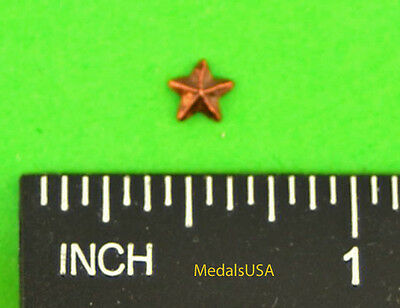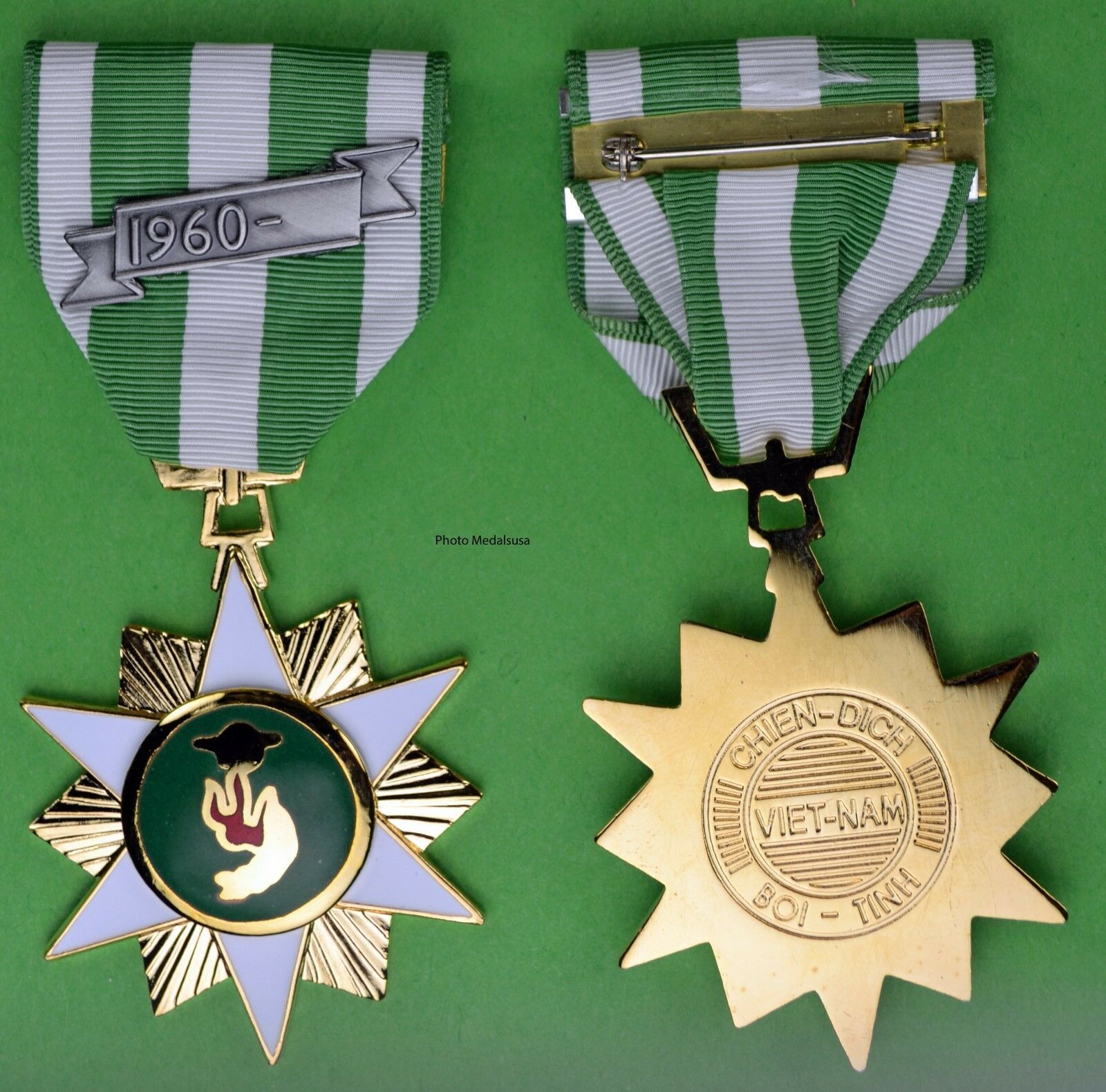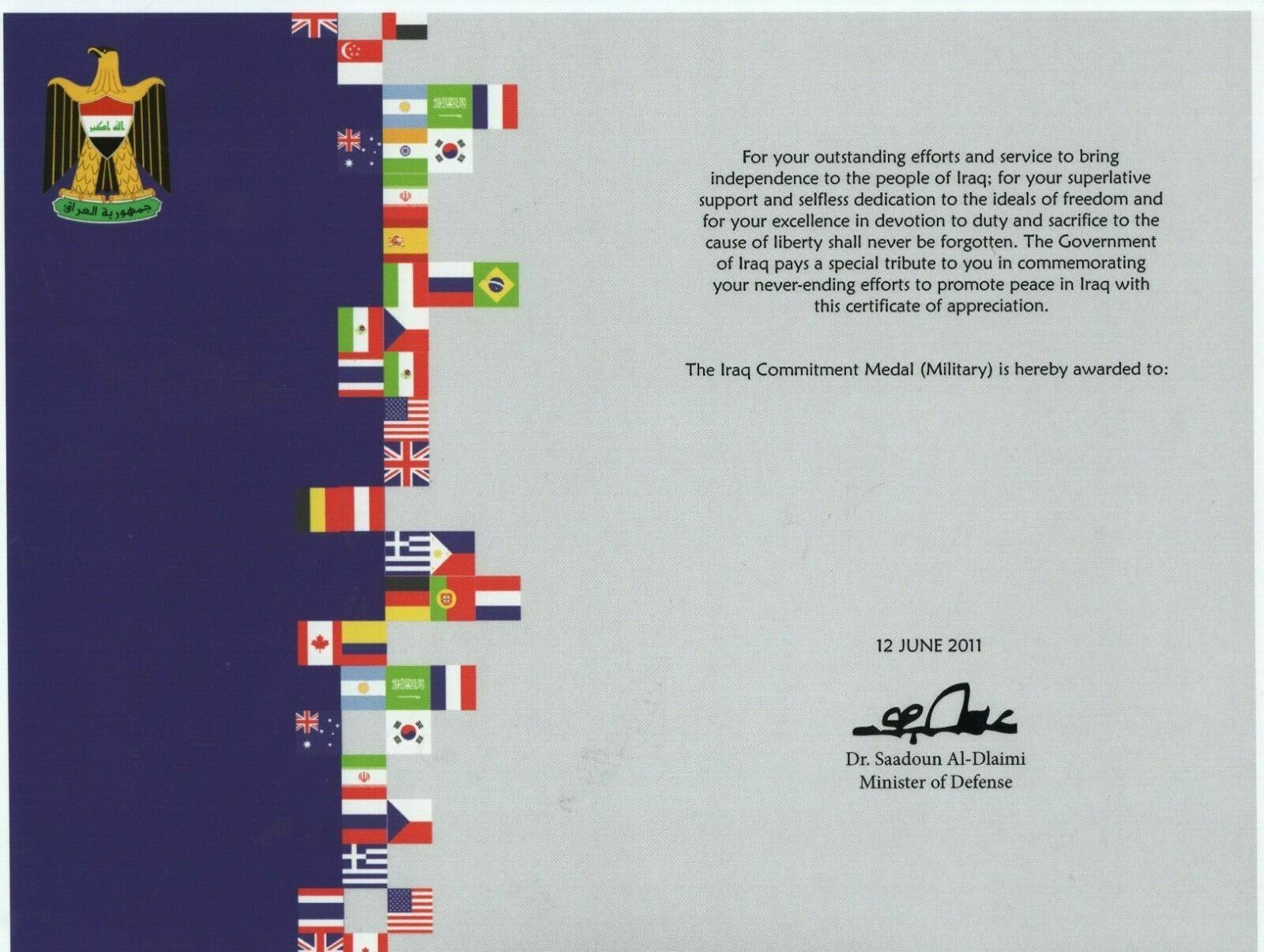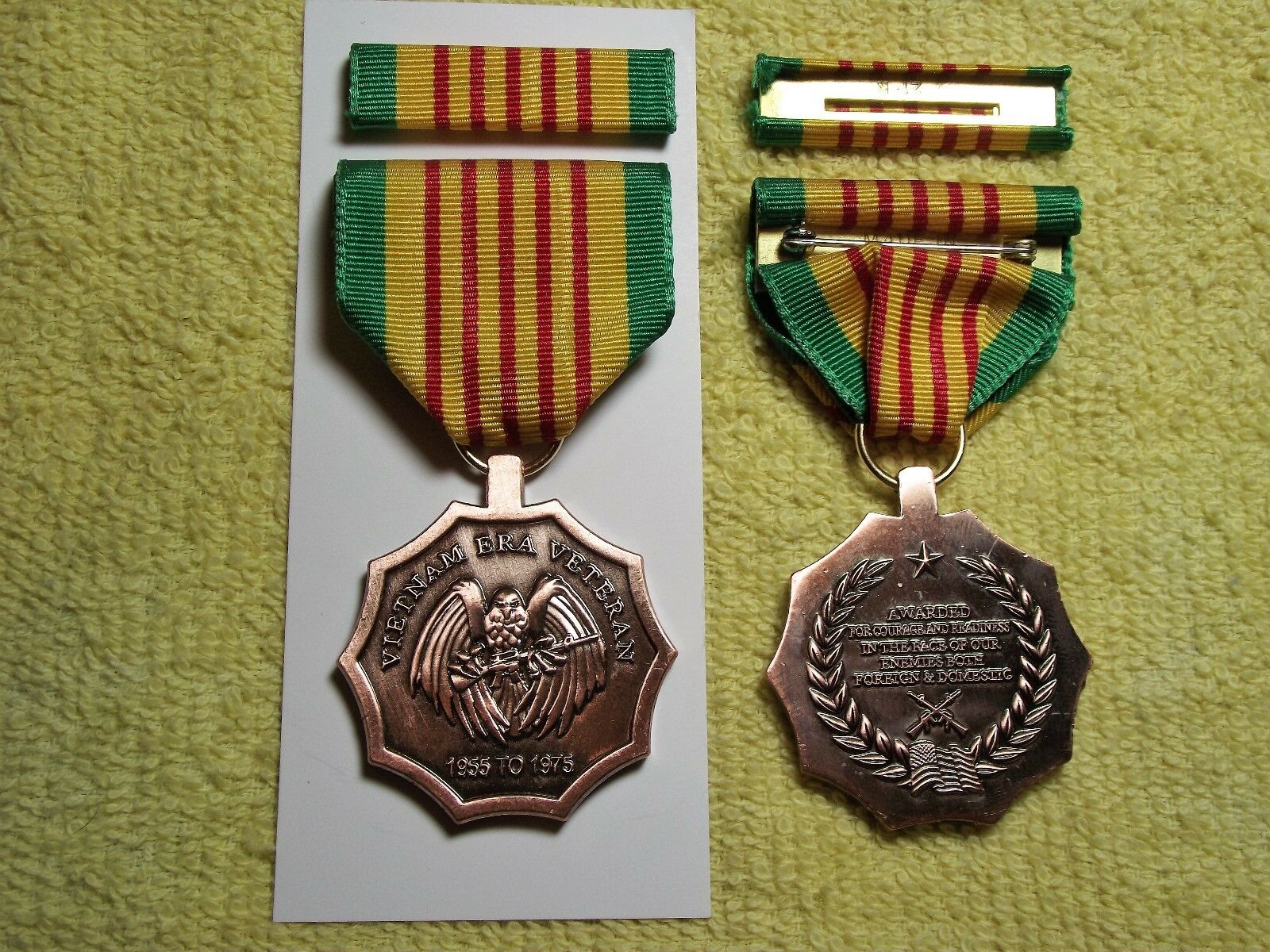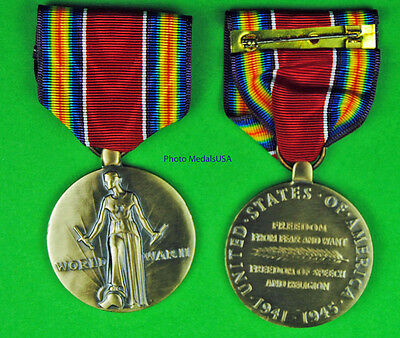-40%
US NAVY SEAL TRIDENT BADGE + GLOBAL WAR TERROSISM MEDAL +MINI +RIBBON W/USMC DEV
$ 26.39
- Description
- Size Guide
Description
WE SHIP WORLDWIDEPLEASE FOLLOW OUR E BAY STORE
SEE ALL PICS
WE COMBINE SHIPPING
SALE
SEE OUR STORE
PLEASE READ WHOLE ADD
United States Navy SEALs
Special Warfare insignia
known as the "SEAL Trident"
Active
1 January 1962 – present
(59 years, 5 months)
Country
United States of America
Branch
United States Navy
Type
Special operations force
Role
Special operations
Direct action
Counter-terrorism
Special reconnaissance
Amphibious reconnaissance
Unconventional Warfare
Hostage rescue
Foreign internal defense
Counter-proliferation
Counter narcotic operations
Part of
U.S. Special Operations Command
U.S. Naval Special Warfare Command
Garrison/HQ
Naval Amphibious Base Coronado
Naval Amphibious Base Little Creek
Nickname(s)
"Frogmen", "The Teams", "The Men with Green Faces"
[1]
Motto(s)
"The Only Easy Day Was Yesterday"
[2]
"It Pays To Be A Winner"
Engagements
Vietnam War
Multinational Force in Lebanon
Operation Urgent Fury
Achille Lauro hijacking
Operation Earnest Will
Operation Prime Chance
Operation Just Cause
Operation Nifty Package
Operation Desert Storm
Somali Civil War
•
Operation Restore Hope
•
Operation Gothic Serpent
•
Battle of Mogadishu
Operation Uphold Democracy
Yugoslav Wars
1999 East Timorese crisis
Operation Enduring Freedom
War in Afghanistan
•
Operation Red Wings
Operation Iraqi Freedom
War in North-West Pakistan
•
Angur Ada raid
•
Operation Neptune Spear
Maersk Alabama
hijacking
War on ISIL
•
Operation Inherent Resolve
•
2014 hostage rescue operations in Yemen
•
2017 Marawi Crisi
Global War on Terrorism Expeditionary Medal
From Wikipedia, the free encyclopedia
Jump to navigation
Jump to search
Global War on Terrorism Expeditionary Medal
The Global War on Terrorism Expeditionary Medal
Type
Expeditionary Medal
Awarded for
Serving or have served in military expeditions to combat
terrorism
.
Presented by
the
U.S. Department of Defense
[1]
U.S. Department of Homeland Security
[2]
Eligibility
U.S. military personnel
Status
Active
Established
EO 13289
, 12 March 2003
First awarded
2004 (retroactive to 11 September 2001)
Service ribbon
and
campaign streamer
Precedence
Next (higher)
Inherent Resolve Campaign Medal
[3]
Next (lower)
Global War on Terrorism Service Medal
[3]
Related
Global War on Terrorism Service Medal,
Iraq Campaign Medal
,
Afghanistan Campaign Medal
The
Global War on Terrorism Expeditionary Medal
(
GWOT-EM
) is a
United States Armed Forces
award
created by
George W. Bush
on 12 March 2003, through Executive Order 13289.
[4]
The medal recognizes those military service members who have deployed overseas in direct service to the
War on Terror
from 11 September 2001 to a date to be determined. Prior to 30 April 2005, the medal was awarded for service within Iraq and Afghanistan, but has been replaced with the
Iraq Campaign Medal
and
Afghanistan Campaign Medal
and now serves primarily as recognition for personnel who have deployed in support of the War on Terror to locations beyond Iraq and Afghanistan. In a similar fashion the
Inherent Resolve Campaign Medal
is now issued instead for service in the fight against
ISIS
, with eligibility retroactive to 15 June 2014.
The War on Terrorism Expeditionary Medal was designed by John Sproston of the Army's Institute of Heraldry.
[5]
Operations and devices
[
edit
]
The following are the approved operations and respective dates for the Global War on Terrorism Expeditionary Medal (retroactive to 11 September 2001):
[6]
[7]
[8]
Operation
From
To
Enduring Freedom
(OEF)
[9]
11 September 2001
TBD
Iraqi Freedom
(OIF)
[9]
19 March 2003
31 August 2010
Nomad Shadow
(ONS)
[9]
5 November 2007
TBD
New Dawn
(OND)
[9]
1 September 2010
31 December 2011
Observant Compass
(OOC)
[9]
1 October 2011
30 September 2017
Inherent Resolve
(OIR)
[9]
15 June 2014
TBD
Freedom's Sentinel
(OFS)
[9]
1 January 2015
TBD
Odyssey Lightning
(OOL)
[9]
1 August 2016
17 January 2017
Operation Pacific Eagle
(OPE-P)
[9]
5 October 2017
TBD
Examples of campaign stars worn on the Global War on Terrorism Expeditionary Medal service ribbon:
Any one of the nine operations
Two of the nine operations
Three of the nine operations
Four of the nine operations
Five of the nine operations
Six of the nine operations
Seven of the nine operations
Eight of the nine operations
All nine operations
The following ribbon devices are authorized for wear on the Global War on Terrorism Expeditionary Medal:
Campaign stars
(all branches)
Arrowhead device
(Army and Air Force)
Fleet Marine Force Combat Operation Insignia
(Navy personnel assigned to a Marine Corps unit in combat)
Criteria
[
edit
]
To be awarded the Global War on Terrorism Expeditionary Medal a military service member must perform duty in a deployed status and must participate in designated anti-terrorism operation for a period of either 30 consecutive or 60 non-consecutive days of duty. For those who were engaged in combat, killed, or wounded in the line of duty, the time requirement is waived. The term "deployed status" indicates either temporary or permanent orders to a duty station outside the borders of the United States of America with such duty being in direct support of anti-terrorism operations. For a service member to receive the Global War on Terrorism Expeditionary Medal, the deployment must also have taken place in a nation which is currently recognized as a base for anti-terrorism operations by the
United States Department of Defense
.
[10]
[11]
On 30 April 2005, the Global War on Terrorism Expeditionary Medal was discontinued for service within
Iraq
and
Afghanistan
, such service now being recognized with the
Iraq Campaign Medal
and
Afghanistan Campaign Medal
.
[12]
Personnel who received the GWOT-EM for previous service in these two regions may elect to exchange the GWOT-EM or retain the original award.
On February 9, 2015 the Defense Department authorized service stars to be worn on the GWOT-EM to represent different operations the recipient participated in.
The GWOT-EM is a Defense Department expeditionary medal. Award of this medal does not prevent award of other types of recognition (such as decorations) normally associated with deployment. This medal may be awarded posthumously.
The Global War on Terrorism Expeditionary Medal may be awarded for approved operations performed in any of the following geographical areas:
[13]
Afghanistan
Algeria
Azerbaijan
Bahrain
Bosnia-Herzegovina
Bulgaria
(Bourgas)
Burkina Faso
Chad
Colombia
Crete
Cyprus
Diego Garcia
Djibouti
Egypt
Eritrea
Ethiopia
Georgia
Guantanamo Bay Naval Base
Hungary
Iran
Iraq
[14]
Discontinued for service in Iraq as of 1 January 2012. Resumed for
Operation Inherent Resolve
.
[15]
Israel
Jordan
Kazakhstan
Kenya
Kosovo
(only specified GWOT operations)
Kuwait
Kyrgyzstan
Lebanon
Mali
Mauritania
Morocco
Niger
Nigeria
Oman
Pakistan
Philippines
Qatar
Romania
(Constanţa)
Saudi Arabia
Senegal
Sierra Leone
Somalia
Syria
Tajikistan
Tanzania
Tunisia
Turkey
(East of 35 degrees E Longitude)
Turkmenistan
United Arab Emirates
Uzbekistan
Yemen
The following bodies of water are also approved qualifying areas:
That portion of the
Arabian Sea
north of
10 degrees north
latitude, and west of
68 degrees east
longitude
Bab-el-Mandeb
Gulf of Aden
Gulf of Aqaba
Gulf of Oman
Gulf of Suez
A portion of the
Mediterranean Sea
("boarding and searching" operations") (East of 28 degrees E longitude)
Persian Gulf
Red Sea
Strait of Hormuz
Suez Canal
Devices
[
edit
]
The Global War on Terrorism Expeditionary Medal may be awarded with the devices:
[16]
Arrowhead device
- For qualified Army and Air Force service members.
Service stars
- effective 9 February 2015, to recognize individual participation in each of the approved operations that a service member participates in, a
3
⁄
16
inch bronze service star is worn on the suspension and
service ribbon
of the medal, with a
3
⁄
16
inch silver star being worn in lieu of five bronze stars.
Fleet Marine Force Combat Operation Insignia
- for qualified Navy service members such as
hospital corpsmen
assigned to Marine Corps units that participate in combat during the assignment.
Expeditionary Medal and Service Medal
[
edit
]
A similar medal, the
Global War on Terrorism Service Medal
(GWOT-SM),
[11]
was created under the same Presidential Order that authorized the GWOT Expeditionary Medal. The primary difference between the two awards is that the service medal is intended for those who performed support duty within the United States, while the expeditionary medal recognizes those who were deployed to foreign countries. For those participating in multiple operations, both the GWOT Service and GWOT Expeditionary Medal may be authorized, but both medals can no longer be bestowed for the same qualifying period of service. The only exception is for service personnel who served in Iraq or Afghanistan prior to 30 April 2005. These personnel were awarded both the Global War on Terrorism Service Medal and the Global War on Terrorism Expeditionary Medal.
Armed Forces Expeditionary Medal
From Wikipedia, the free encyclopedia
Jump to navigation
Jump to search
Armed Forces Expeditionary Medal
Type
Expeditionary medal
Presented by
the
Department of Defense
[1]
Eligibility
Served in the U.S. Armed Forces after July 1, 1958 and participated in U.S. military operations, U.S. operations in direct support of the United Nations, or U.S. operations of assistance for friendly foreign nations.
Status
Currently awarded
Established
Executive Order 10977
, December 4, 1961
Service ribbon
and
streamer
Precedence
Next (higher)
Antarctica Service Medal
Next (lower)
Vietnam Service Medal
The
Armed Forces Expeditionary Medal
(
AFEM
) is a
military award
of the
United States Armed Forces
, which was first created in 1961 by Executive Order of
President John Kennedy
. The medal is awarded to members of the
U.S. Armed Forces
who, after July 1, 1958, participated in U.S. military operations, U.S. operations in direct support of the
United Nations
, or U.S. operations of assistance for friendly foreign nations.
Contents
1
Appearance
2
Criteria
3
Approved operations
3.1
U.S. military operations
3.2
U.S. operations in direct support of the United Nations
3.3
U.S. operations in direct support of NATO operations
3.4
U.S. operations of assistance for a friendly foreign nation
4
Similar awards
5
See also
6
Notes
7
References
7.1
Bibliography
Appearance
[
edit
]
The Armed Forces Expeditionary Medal is issued as a bronze medal, 1-1/4 inches in diameter.
The obverse side of the medal consists of an eagle, with wings addorsed and inverted (representing the strength of the United States Armed Forces), standing on a sword loosened in its scabbard, and super- imposed on a radiant compass rose of eight points, (representing the readiness to serve wherever needed) all within the circumscription "ARMED FORCES" above and "EXPEDITIONARY SERVICE" below with a sprig of laurel on each side. On the reverse side of the medal is the shield from the United States Coat of Arms above two laurel branches separated by a bullet, all within the circumscription "UNITED STATES OF AMERICA".
[2]
The ribbon is 1 3/8 inches wide and consists of the following stripes: 3/32 inch Green; 3/32 inch Golden Yellow ; 3/32 inch Spicebrown ; 3/32 inch Black ; 7/32 inch Bluebird ; 1/16 inch Ultramarine Blue ; 1/16 inch White ; 1/16 inch Scarlet; 7/32 inch Bluebird; 3/32 inch Black; 3/32 inch Spicebrown; 3/32 inch Golden Yellow; and 3/32 inch Green.
Ribbon devices
A bronze
service star
is authorized for participation in subsequent U.S. military operations authorized for award of the AFEM (only one award is authorized for each designated U.S. military operation). A silver service star is worn in lieu of five bronze service stars.
The
Arrowhead device
is authorized for
United States Army
and
United States Air Force
personnel who are awarded the medal through participation in an airborne or amphibious assault.
[3]
The
Fleet Marine Force Combat Operation Insignia
is authorized for U.S. Navy service members assigned to Marine Corps units that participate in combat during the assignment.
[2]
Criteria
[
edit
]
The Armed Forces Expeditionary Medal may be authorized for three categories of operations: U.S. military operations; U.S. military operations in direct support of the United Nations; and U.S. operations of assistance for friendly foreign nations. The medal shall be awarded only for operations for which no other U.S. campaign medal is approved, where a foreign armed opposition or imminent threat of hostile action was encountered.
[2]
Since its original conception in 1961, the Armed Forces Expeditionary Medal has been awarded for United States participation in over forty five designated military campaigns. The first campaign of the AFEM was the
Cuban Missile Crisis
and the award was issued for military service between October 1962 and June 1963. Following this original issuance, the AFEM was made retroactive to 1958 and issued for actions in Lebanon, Taiwan, Republic of the Congo, Quemoy and Matsu, and for duty in
Berlin
between 1961 and 1963.
[4]
During the early years of the
Vietnam War
, the Armed Forces Expeditionary Medal was issued for initial operations in South Vietnam, Laos, and Cambodia. The Armed Forces Expeditionary Medal was intended to replace the
Marine Corps Expeditionary Medal
and
Navy Expeditionary Medal
, but this never occurred and both services continue to award their service expeditionary medals and the AFEM, though not concurrently for the same action.
[5]
In 1965, with the creation of the
Vietnam Service Medal
, the AFEM was discontinued for Vietnam War service. As the Vietnam Service Medal was retroactively authorized, those personnel who had previously received the AFEM were granted the option to exchange the Armed Forces Expeditionary Medal for the Vietnam Service Medal. In 1968, the AFEM was awarded for Naval operations in defense of the
USS
Pueblo
(AGER-2)
, which was seized by North Korea, as well as for Korean Service, and awarded for Thailand and Cambodia operations in 1973. Because of these awards during the Vietnam War period, some military personnel have been awarded both the Armed Forces Expeditionary Medal & the Vietnam Service Medal. Some military advisers involved in the 1973 Arab–Israeli War were also awarded the medal for their involvement in the supply and training of the IDF on the use and deployment of anti-tank weapons.
In the 1990s, it was awarded to numerous Naval ships such as
USS
Simpson
(FFG-56)
who enforced the
Dayton Peace Accords
and operated in the Adriatic Sea enforcing UN arms embargo against Croatia and Bosnia-Herzegovina and participating in
Operation Sharp Guard
and
Operation Joint Endeavor
up through and during the Bosnian crisis.
In 2003, with the creation of the
Global War on Terrorism Expeditionary Medal
, the AFEM was discontinued for Iraq, Saudi Arabia, and Kuwait. After 18 March 2003, some personnel became eligible for the Armed Forces Expeditionary Medal, as well as the
Global War on Terrorism Expeditionary Medal
. Only one medal may be awarded, however, and individuals or units that deployed to the Gulf for Operation Southern Watch, and then immediately transitioned to
Operation Iraqi Freedom
, are not eligible for both medals.
Beginning in 1992 an effort was begun to phase out the AFEM in favor of campaign specific medals and the newly created
Armed Forces Service Medal
. The Armed Forces Service Medal was also originally intended to be a replacement for the Armed Forces Expeditionary Medal, however the two awards are currently considered separate awards with different award criteria. The primary difference between the two is that the Armed Forces Expeditionary Medal is normally awarded for combat operations and combat support missions.
Approved operations
[
edit
]
U.S. military operations
[
edit
]
After the close of the Vietnam War, the Armed Forces Expeditionary Medal was issued for various military operations in Panama,
Grenada
, and Libya
Operation El Dorado Canyon
.
[2]
Approved U.S. Military Operations for the Armed Forces Expeditionary Medal
Area or operation
Start date
End date
Quemoy
and
Matsu Islands
23 August 1956
1 June 1963
Lebanon (
1958 Lebanon crisis
)
1 July 1958
1 November 1958
Taiwan Straits (
Second Taiwan Strait Crisis
)
23 August 1958
1 January 1959
Berlin (
Berlin Crisis
)
14 August 1961
1 June 1963
Cuba
24 October 1962
1 June 1963
Congo (
Operation Dragon Rouge
)
23 November 1964
27 November 1964
Dominican Republic (
Operation Power Pack
)
28 April 1965
21 September 1966
Korea
[a]
1 October 1966
30 June 1974
Arab–Israeli War (Operation Nickel Grass)
October 6, 1973
October 25, 1973
Cambodia (Evacuation-
Operation Eagle Pull
)
11 April 1975
13 April 1975
Vietnam (Evacuation
Operation Frequent Wind
)
[b]
29 April 1975
30 April 1975
Mayagüez Operation
15 May 1975
15 May 1975
Grenada (
Operation Urgent Fury
)
23 October 1983
21 November 1983
Libya (
Operation El Dorado Canyon
)
12 April 1986
17 April 1986
Persian Gulf (
Operation Earnest Will
)
24 July 1987
26 September 1988
Panama (
Operation Just Cause
)
20 December 1989
31 January 1990
Haiti (
Operation Uphold Democracy
)
16 September 1994
31 March 1995
Kuwait, UAE, Bahrain, waters of the Arabian / Persian Gulf (
Operation Southern Watch
)
December 1995
March 2003
Saudi Arabia (Operation Southern Watch)
December 1995
March 2003
Haiti (
Operation Secure Tomorrow
)
29 February 2004
15 June 2004
Former
Republic of Yugoslavia
[c]
1 January 2014
to a date to be determined
U.S. operations in direct support of the United Nations
[
edit
]
The medal is also authorized for several
United Nations
actions, such as peacekeeping efforts in
Somalia
.
[2]
Approved U.S. Operations in Direct Support of the United Nations for the Armed Forces Expeditionary Medal
Area or operation
Start date
End date
Democratic Republic of the Congo
14 July 1960
1 September 1962
Somalia (
Operation Restore Hope
,
Operation United Shield
)
5 December 1992
31 March 1995
U.S. operations in direct support of NATO operations
[
edit
]
The medal is also authorized for
NATO
peacekeeping operations in
Bosnia and Herzegovina
and
Croatia
.
[2]
Approved U.S. Operations in Direct Support of the
North Atlantic Treaty Organization
(NATO) for the Armed Forces Expeditionary Medal
Area or operation
Start date
End date
Former Republic of Yugoslavia
(
Operation Joint Endeavor
)
[d]
[e]
1 June 1992
19 December 1996
Former Republic of Yugoslavia
(
Operation Joint Guard
)
[d]
[e]
20 December 1996
20 June 1998
Former Republic of Yugoslavia (
Operation Joint Forge
)
21 June 1998
2 December 2004
U.S. operations of assistance for a friendly foreign nation
[
edit
]
The AFEM has been issued for numerous operations in the
Persian Gulf
, most notably
Operation Earnest Will
, which began in 1987 and lasted until the eve of
Operation Desert Shield
.
[6]
Following the close of Desert Storm,
[7]
and the engagement in peacekeeping and sanction missions against Iraq, the Armed Forces Expeditionary Medal was issued again for several operations such as
Operation Northern Watch
,
Operation Southern Watch
, and Operation Vigilant Sentinel.
[2]
Approved U.S. Operations of Assistance for a Friendly Foreign Nation for the Armed Forces Expeditionary Medal
Area or operation
Start date
End date
Vietnam (General Service)
1 July 1958
3 July 1965
Laos
19 April 1961
7 October 1962
Cambodia (Vietnam Support Operations)
29 March 1973
15 August 1973
Thailand (Cambodia Support Operations)
29 March 1973
15 August 1973
El Salvador
1 January 1981
1 February 1992
Lebanon
1 June 1983
1 December 1987
Persian Gulf (
Operation Earnest Will
)
24 July 1987
1 August 1990
Southwest Asia (Operation Southern Watch)
1 December 1995
18 March 2003
Southwest Asia (Maritime Intercept Operations)
1 December 1995
18 March 2003
Southwest Asia (Operation Vigilant Sentinel)
1 December 1995
15 February 1997
Southwest Asia (
Operation Northern Watch
)
1 January 1997
18 March 2003
Southwest Asia (
Operation Desert Thunder
)
11 November 1998
22 December 1998
Southwest Asia (
Operation Desert Fox
)
16 December 1998
22 December 1998
Southwest Asia (
Operation Desert Spring
)
31 December 1998
18 March 2003
Similar awards
[
edit
]
Similar awards of the Armed Forces Expeditionary Medal:
The
Global War on Terrorism Expeditionary Medal
(the AFEM is no longer issued for operations in the
Middle East
, but may be reactivated for future campaigns which may not qualify for either the Global War on Terrorism Expeditionary Medal, Iraq Campaign Medal, and Afghanistan Campaign Medal). Similar in nature to the AFEM, the GWOTEM is awarded for deploying abroad on or after Sept. 11, 2001 (and a future date to be determined), for service in
Operation Enduring Freedom
(OEF) or
Operation Iraqi Freedom
(OIF). Service stars are also authorized for the Global War on Terrorism Expeditionary Medal effective February 9, 2015 retroactive to September, 11, 2001.
[8]
Each service star represents a deployment in support of an approved GWOT operation. Only one GWOT-EM is awarded for each operation (five bronze service stars are authorized for six approved deployment operations). The GWOT-EM approved operations by inclusive dates are:
[8]
Enduring Freedom: September 11, 2001 – present
Iraqi Freedom
: March 19, 2003 - August 31, 2010
Nomad Shadow
: November 5, 2007 – present
New Dawn
(Operation Iraqi Freedom renamed): September 1, 2010 – December 31, 2011
Inherent Resolve
: June 15, 2014 – present
Freedom's Sentinel
: January 1, 2015 – present
The
Navy Expeditionary Medal
and the
Marine Corps Expeditionary Medal
. In the modern era, service members who were authorized one of these medals are occasionally permitted to choose between receipt of the Armed Forces Expeditionary Medal or the service specific expeditionary medal. The AFEM and the Navy/Marine Expeditionary Medal cannot be bestowed simultaneously for the same action.
Navy Good Conduct Medal
[
edit
]
The Navy Good Conduct Medal is the third oldest continuously awarded medal in the United States. The "U.S.N." Type I medal was authorized on 26 April 1869 and was produced by E. V. Haughwout Company of New York. The medal was issued with a red, white and blue material suspension ribbon without a suspension pin. The medal is in the design of a
Maltese cross
and the name of the recipient was engraved on the reverse.
[4]
The Navy Good Conduct Medal is the oldest Good Conduct Medal, dating back to 26 April 1869. There have been a total of four versions of the Navy Good Conduct Medal, the first version of which was issued from 1870 to 1884. The original Navy Good Conduct Medal was also not worn on a uniform, but issued with discharge papers as a badge to present during reenlistment. A sailor in the Navy received a new Good Conduct Medal for each honorable enlistment completed.
[5]
The second version of the Navy Good Conduct Medal was issued between 1880 and 1884. The medal was considered a "transitional decoration"
[4]
and was the first of the Good Conduct Medals to be worn on a uniform. The medal was phased out by 1885 and a new medal issued between 1885 and 1961. The new medal was a Good Conduct medallion suspended from an all red ribbon.
Enlistment bars
, denoting each honorable enlistment completed, were pinned on the ribbon as attachments.
There was slight oddity during the
Spanish–American War
when the Navy created the
Specially Meritorious Service Medal
which also had an all red suspension and
service ribbon
. There were recorded cases of Navy enlisted personnel who were awarded both the Good Conduct Medal and the Specially Meritorious Service Medal who wore two red service ribbons on their Navy service uniforms. This is one of the rare times in the history of U.S. military awards that two awards had identical ribbons.
In the 1950s bronze and silver 3/16 inch stars, with one silver star worn in lieu of five bronze stars (e.g., six awards), replaced the enlistment bars. Although the medal itself had not changed since 1884, in 1961 a ring suspension for the ribbon and medal combination was adopted, differentiating the suspension from its Marine Corps Good Conduct Medal counterpart and standardizing it with the majority of other service medals. It is this 1961 version of the Navy Good Conduct Medal that is still in use today.
[6]
The current Navy Good Conduct Medal is issued to every active duty enlisted sailor who completes three years of honorable and faithful service since 1 January 1996. For prior awards to personnel between 1 November 1963 and 1 January 1996, four years of service were required. The four year requirement also applies for award of the Navy Good Conduct Medal from its original establishment until 1 November 1963.
Additional awards of the Navy Good Conduct Medal are denoted by bronze and silver 3/16 inch stars; silver stars are worn in place of five bronze ones.
[7]
The reverse side of the medal has three words, "FIDELITY ZEAL OBEDIENCE" superimposed in a semicircle. Upon 12 years of service, sailors are also allowed to wear
gold-colored version
of their petty officer insignia, something usually seen with those with the
rate
of
chief petty officer
or
petty officer first class
and above, but occasionally
petty officer second class
. Prior to June 2019, those 12 years had to be infraction-free. It is extremely rare in the contemporary U.S. Navy, but provisions do allow for sailors rated
petty officer third class
to wear gold rate insignia, provided they meet the same requirements.








